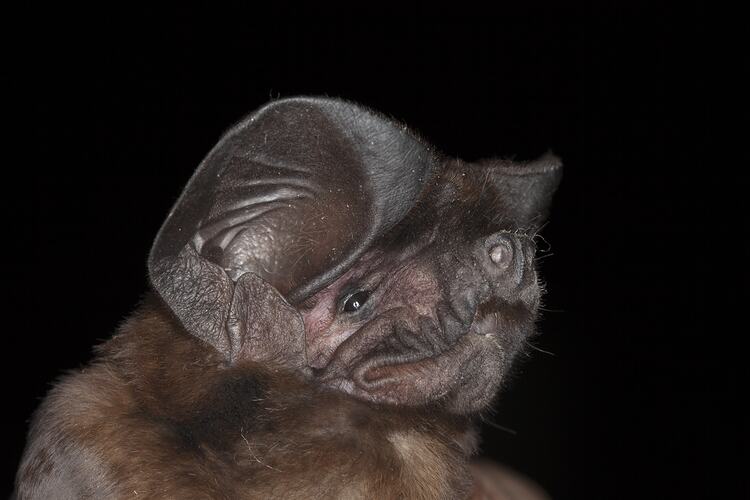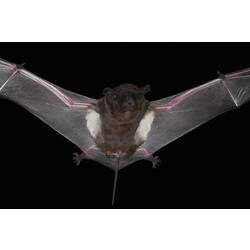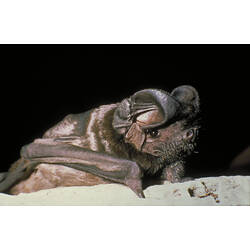General Description
Body fur brown above and lighter underneath. Wide white stripes on each side of the body. Ears point forward, and are wide and ribbed. Their 'free' tail extends well beyond their flying membrane. Wingspan up to 40 cm, body up to 10 cm. Echolocation call, a high-pitched 'ting-ting-ting' at a frequency of 1-2 'tings' per second.
Biology
The White-Striped Free-tail Bat is one of Australia's most common bats. They are one of the few bat species that produce echolocation sounds that can be heard by humans. Though rarely seen, except flying quickly overhead, their echolocation calls are one of the most common sounds of the night.
Distribution
Mainland Australia, excluding monsoonal tropics.
Habitat
Woodland and urban areas.
More Information
-
Animal Type
-
Animal SubType
-
Brief Id
White stripes on body, ribbed ears that point forward.
-
Colours
Brown, Black
-
Habitats
Wetland, Urban, DryForest, WetForest, Woodland, Mallee, Grassland
-
Where To Look
-
When Active
Nocturnal
-
Diet
Insects
-
Endemicity
-
Commercial
No
-
Conservation Statuses
CITES: Not listed, FFG Threatened List: Not listed, EPBC Act 1999: Not listed, IUCN Red List: Least Concern
-
Taxon Name
-
Scientific Author
(Gray, 1839)
-
Common Name
White-striped Free-tailed Bat
-
Kingdom
-
Phylum
-
Subphylum
-
Class
-
Superorder
-
Order
-
Suborder
-
Superfamily
-
Family
-
Subfamily
-
Genus
-
Species Name
australis




